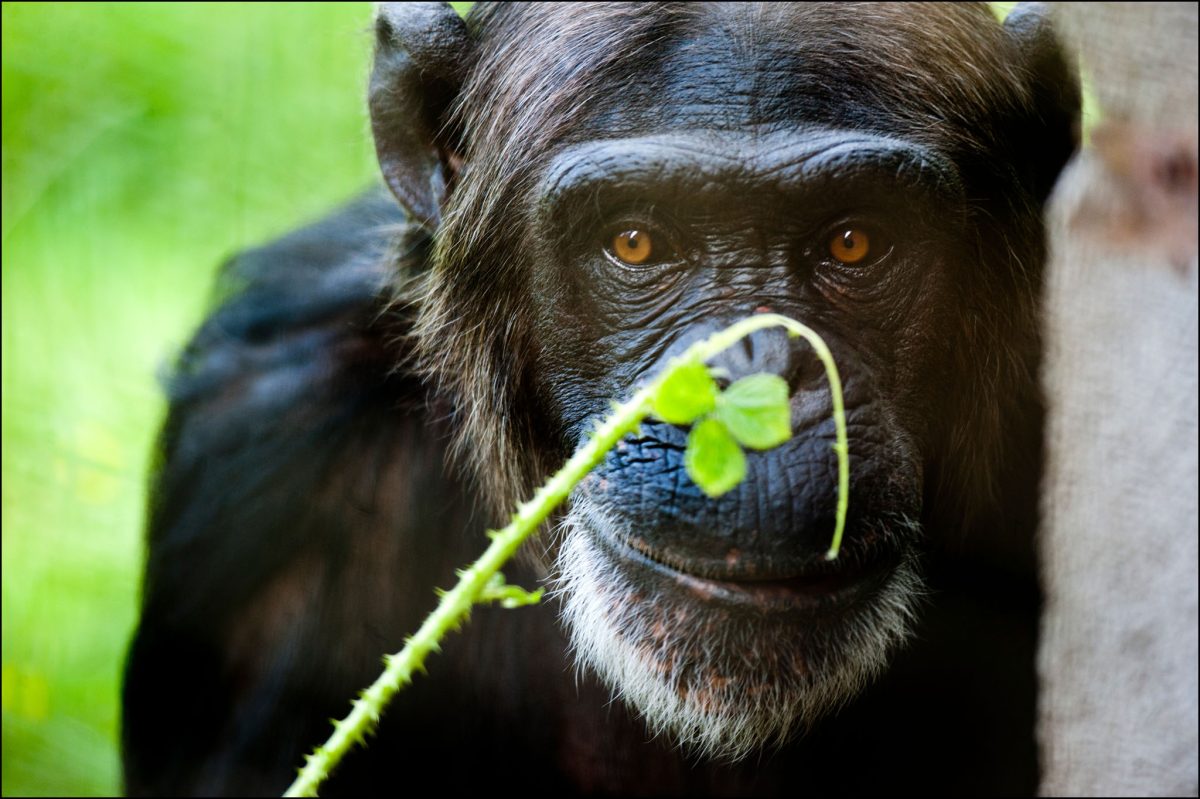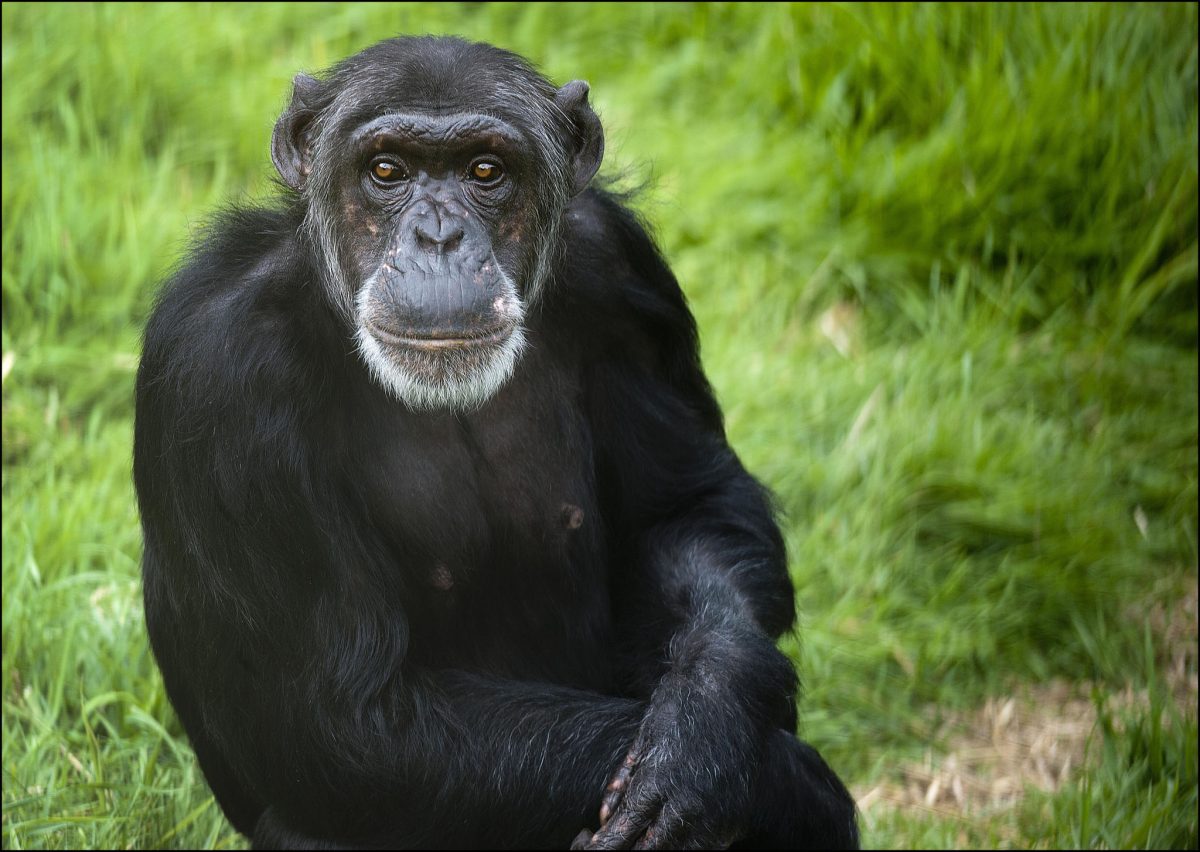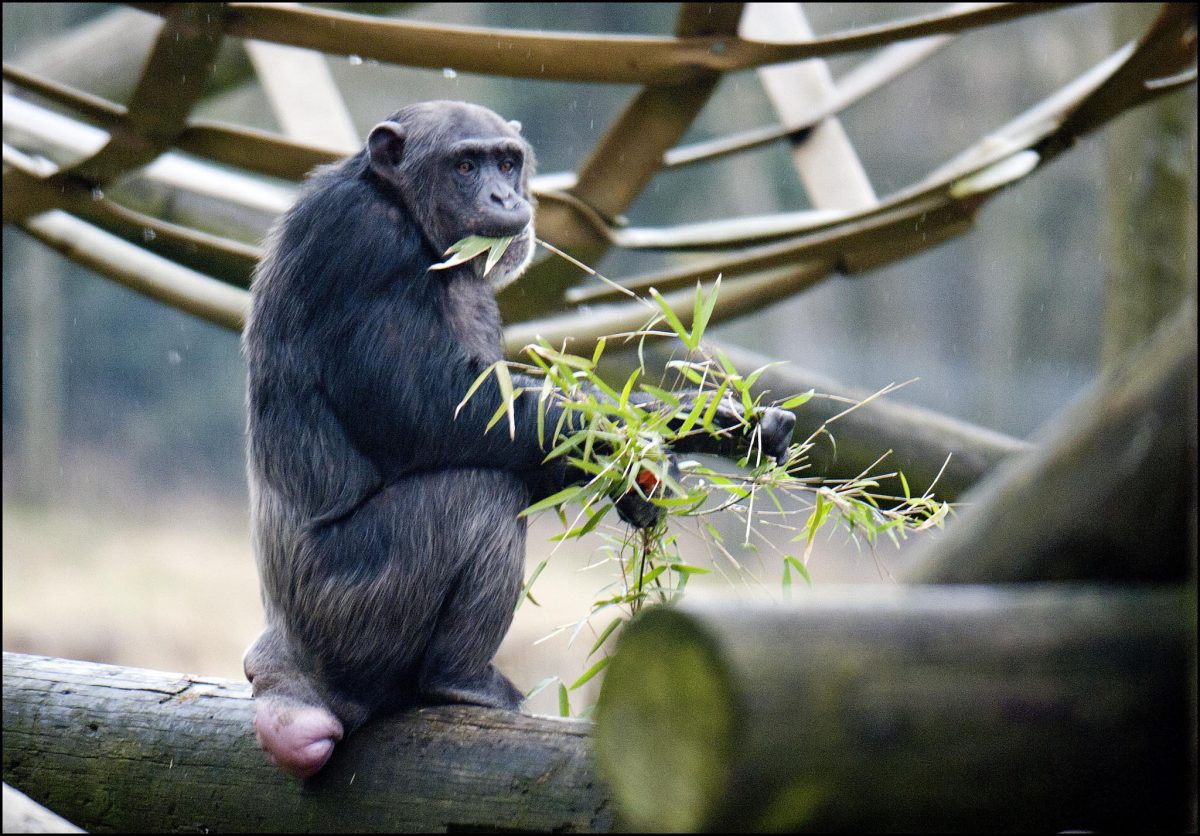Factfile
Where they live
Africa, from Guinea to western Uganda and Tanzania
Habitat
Rainforests and wet savannahs
Size
males are approximately 1.7m high and females 1.3m
Weight
both weigh 45-80kg
Lifespan
50-60 years
Threats
Habitat destruction remains the major threat with poaching for bushmeat and the pet trade also playing a major part in the decline in numbers
Did you know...
- Chimpanzees are man's closest relative; the genetic difference between humans and chimps is less than two per cent
- Chimpanzees are seven times stronger than man
- Chimpanzees communicate by a range of calls, facial expressions and gestures
- Like all apes chimpanzees have short legs and long arms
More about chimpanzees...
Chimpanzees are social animals living in large mixed groups which can number up to 100 individuals. Throughout the day the community splits to form smaller groups as the chimpanzees travel through the west African forests foraging for food.
Typically, there is a dominant male within the community who controls the group and maintains order during any disputes. In chimpanzee society the dominant male does not always have to be the largest or strongest male but the most manipulative, and political, male who can influence activities.
Male chimpanzees attain dominance by cultivating allies who will provide support for that individual in case of future ambitions for power. Female chimpanzees will show deference to the alpha male by presenting their hind-quarters. Bonds within the group are often strengthened by social grooming.
Chimpanzees breed all year round, whenever one of the females in the troop comes into season.
The single baby is born after a gestation period of 196-224 days and for the first five months of its life it is carried everywhere by its mother, clinging tightly to her fur.
Youngsters begin to walk at about six months and weigh 9kg at one year old.
The baby is dependent on its mother for at least two years.
Females breed every three years so the mother will often have another baby by the time the first becomes full independent. Youngsters spend much if their time with chimpanzees of their own age and for the next four or five years learn where the best feeding places are and how to behave as a senior member of the troop.
Chimpanzees are omnivores whose diet consists of a wide range of fruits and plants. They also feed upon a wide variety of insects including ants, bugs beetles and termites. They will eat meat, but this makes up just five per cent of their diet. Their prey includes small mammals, birds and eggs as well as small primates.
Chimpanzees are one of the few members of the animal kingdom who regularly fashion tools from objects in their environment. They make leaf sponges, use twigs to probe for ants and termites, stones and branches as hammers and anvils or as weapons.
How you can help...
Adopt a Chimpanzee!
Help prevent animals from becoming extinct by adopting an animal, you'll be supporting our zoo too!
Gold Adoption
Help support our zoo with a Gold adoption package with an additional zoo admission ticket, and personalised message displayed outside your adopted animalʼs enclosure.
£55.00
Find out moreSilver Adoption
Help support our zoo with a Silver adoption package it includes an adoption certificate, a zoo admission ticket and lots of zoo treats!
£41.50
Find out more











